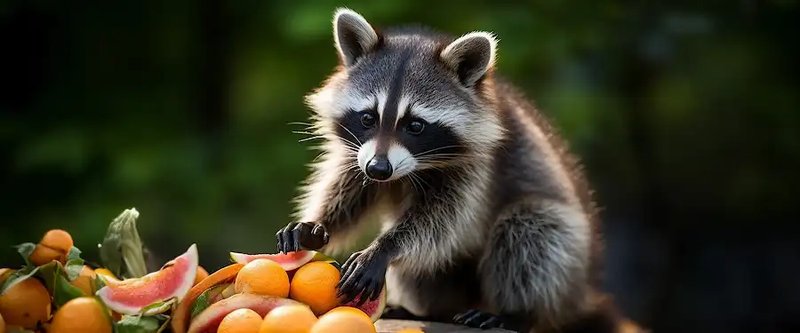
Raccoons are often seen as nuisances, but there’s a lot more to these animals than meets the eye. You might be surprised to learn that their diet is incredibly varied, and their hunting methods are just as diverse. Understanding these aspects can help you appreciate these furry little bandits a bit more. So, grab a coffee, and let’s explore the ins and outs of raccoon dining and hunting habits!
The Raccoon’s Omnivorous Diet
One of the remarkable features of raccoons is their omnivorous diet. This means they enjoy both plants and animals, which allows them a great deal of flexibility in what they consume. Honestly, it’s like having a full buffet at their disposal! Raccoons are known to eat a wide array of foods, including:
- Fruits and Vegetables
- Insects and Worms
- Fish and Small Mammals
- Snails and Crustaceans
- Human Food, like garbage or pet food
You might be wondering how they manage to find such a diverse spread. Raccoons are primarily nocturnal, meaning they’re active at night. This nocturnal lifestyle gives them an edge when it comes to foraging. They often use their sensitive front paws to dig and explore, which is why you might see them pawing through your trash can. It’s akin to a kid searching for hidden treasures in their backyard!
Foraging Behavior: How Raccoons Find Food
Raccoons are expert foragers, and their keen sense of touch plays a significant role in their food search. Their paws are equipped with a high number of nerve endings, allowing them to feel and manipulate objects. This ability helps them uncover hidden food sources. Here’s the thing: they often rely on their memory and experience to locate food spots. If they’ve had success finding snacks in a particular area before, they’re likely to return.
Their foraging strategy is often influenced by the season. During warmer months, fruits and vegetables become prominent in their diet. However, once winter rolls in, they shift their focus toward more substantial foods like insects and small mammals. This adaptability is vital for their survival, especially as resources change throughout the year.
Hunting Techniques: From Stealth to Speed
When it comes to hunting, raccoons have a few tricks up their sleeves. They can be quite stealthy, using the cover of darkness to stalk their prey. Their sharp senses allow them to hear and smell food from afar. Raccoons are also known to use their agility to climb trees in pursuit of birds or to access higher ground for a better vantage point.
You might imagine them creeping silently through the underbrush like a seasoned hunter, ready to pounce at the right moment. If they’re hunting fish, for example, they might wade into shallow waters, quickly swiping their paws to catch their slippery prey. This mixture of patience and agility makes them proficient hunters.
Social Eating: Raccoons and Their Packs
While raccoons are often thought of as solitary creatures, they can be quite social when it comes to eating. Sometimes, you might see them sharing a meal or foraging in groups, especially when there’s a plentiful food source. You could think of them as having a little dinner party with their raccoon friends.
This social behavior can enhance their hunting success. By working together, raccoons might scare a group of birds or other small animals into the open, making it easier for everyone to get a meal. Plus, hunting in groups can provide safety in numbers, as they can watch out for potential threats together.
Adapting to Urban Environments
Raccoons have become experts at living alongside humans, adapting their hunting strategies and diet to fit urban landscapes. City raccoons often find food in dumpsters, parks, or even your backyard. They’ve learned to associate people with easy food sources, leading many to think of them as mere pests.
Interestingly, urban raccoons often rely less on traditional hunting methods. Instead, they scavenge for leftovers or raid trash bins. Their ability to adapt to city life is a testament to their intelligence. For example, they can figure out how to open lids on garbage cans or navigate through fences to reach a food source. It’s like they’ve gone to “school” of human behavior!
The Role of Raccoons in the Ecosystem
Despite their sometimes pesky reputation, raccoons play a vital role in their ecosystems. By consuming a variety of foods, they help control insect populations and disperse seeds from the fruits they eat. This behavior helps maintain healthy plant life and promotes biodiversity in their habitats.
Moreover, raccoons can be markers of a healthy environment. Their presence indicates a balanced ecosystem where various species can thrive. So, the next time you see a raccoon, you can appreciate them as little caretakers of the environment, even if they’re digging through your garbage!
Raccoons are fascinating creatures with a unique set of skills when it comes to their diet and hunting strategies. From their omnivorous palate to their clever adaptability, these little bandits remind us of the wonders of nature’s design. After all, even the most urbanized raccoon can teach us about survival and resourcefulness.
So, whether you find them adorable or a bit annoying, there’s no denying the intelligence and resilience of raccoons. Next time you catch a glimpse of one, take a moment to appreciate its resourceful nature and the role it plays in our ecosystem. They truly are remarkable survivors!
